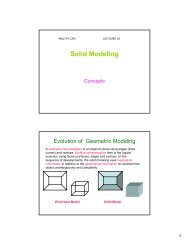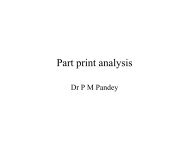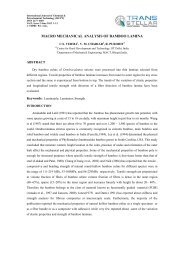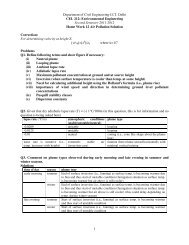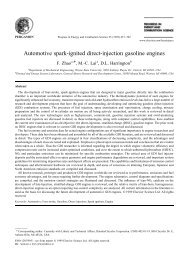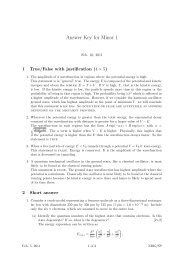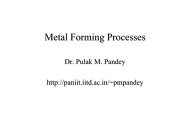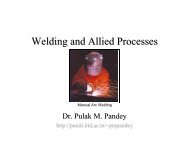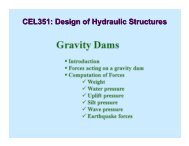Presentation - Indian Institute of Technology Delhi
Presentation - Indian Institute of Technology Delhi
Presentation - Indian Institute of Technology Delhi
Create successful ePaper yourself
Turn your PDF publications into a flip-book with our unique Google optimized e-Paper software.
Glass-ceramic seals for SOFC<br />
Even if the coefficients <strong>of</strong> thermal expansion are matched, the rates <strong>of</strong> thermal conductivities within a stack are typically not matched,<br />
resulting in non-uniform thermal expansion. As glass is inherently brittle, it cracks and fails under thermal cycling conditions. The brittleness<br />
<strong>of</strong> glass also makes glass seals subject to failure as a result <strong>of</strong> jarring shocks or vibrations.<br />
The fibres may be randomly oriented. In a preferred embodiment, the seal may be precompressed prior to use.<br />
[0009] The ceramic fibres may be selected from the group comprising alumina, zirconia, titania, magnesia or silica. The solid particles may<br />
be ceramic particles, glass particles or other inert materials able to resist degradation and sintering at the operating temperatures <strong>of</strong> the SOFC<br />
stack. If the particles are ceramic particles, the particles may be selected from the group comprising alumina, zirconia, titania, magnesia or<br />
silica.<br />
[0010] In one embodiment, a substantial portion or all <strong>of</strong> the particles are submicronic ceramic particles. Preferably, the particles have a<br />
particle size <strong>of</strong> about 0.50 .mu.m or less. More preferably, the ceramic particles comprise a first portion and a second portion wherein the<br />
particle size <strong>of</strong> the first portion is larger than the particle size <strong>of</strong> the second portion. The first portion may have a particle size <strong>of</strong> about 0.50<br />
.mu.m and the second portion may have a particle size <strong>of</strong> about 0.17 .mu.m or less. In another embodiment, the first portion may have a<br />
particle size <strong>of</strong> about 0.50 .mu.m and the second portion may have a particle size <strong>of</strong> less than about 0.06 .mu.m. The proportion <strong>of</strong> larger<br />
particles to smaller particles may be varied to achieve maximum sealing performance.



